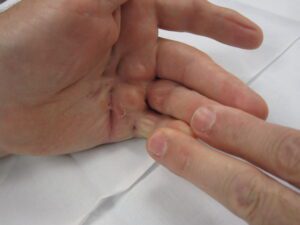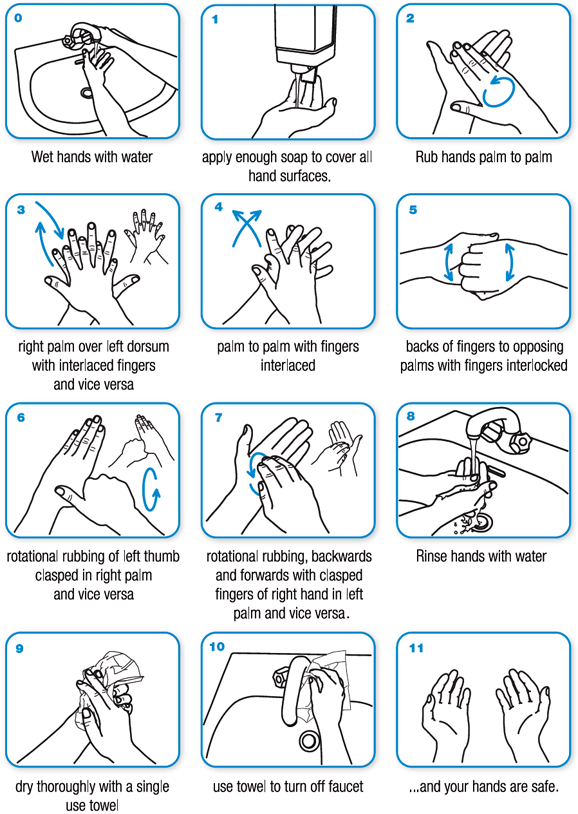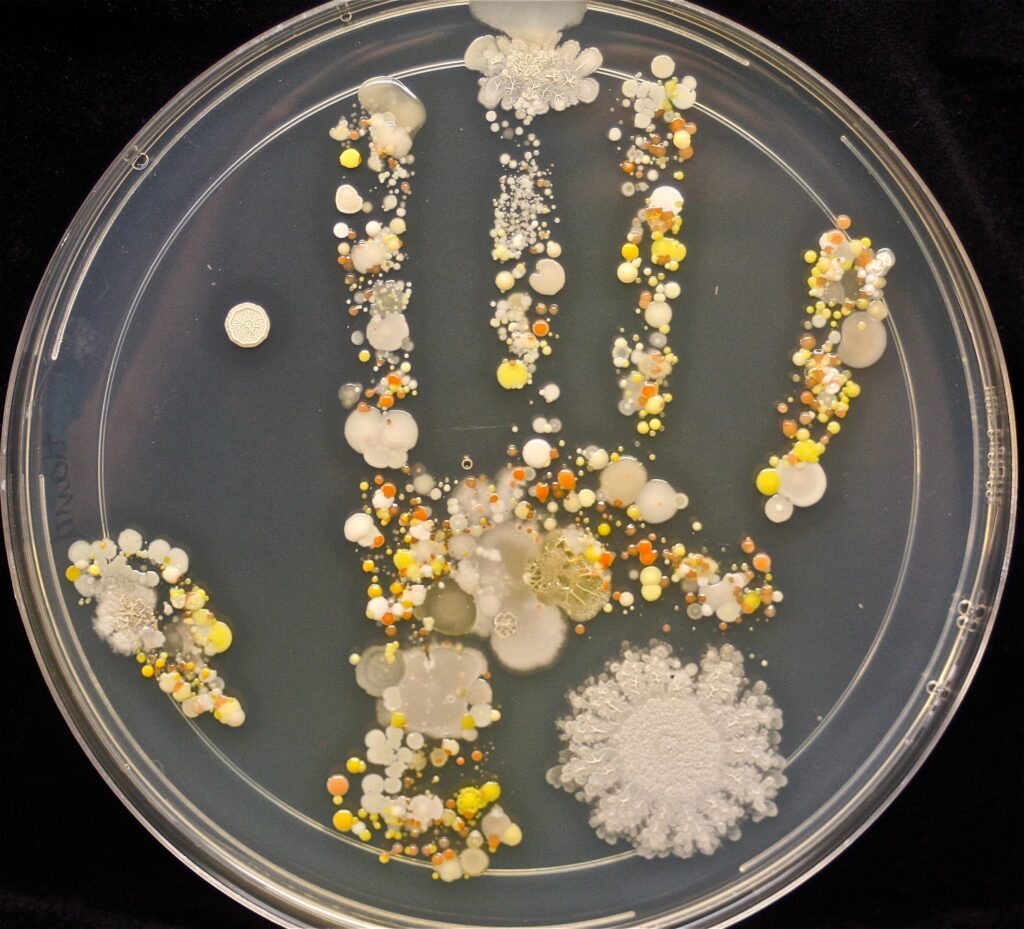Dupuytren, Handwashing, and COVID-19

Dupuytren contracture can make simple things difficult – like washing, rinsing, and drying all the skin of hands and fingers.
COVID-19 raises the stakes on the need for frequent and effective handwashing.
Dupuytren-related skin dimples, fingers which can’t be separated, and areas where skin folds on itself – all are difficult to wash and challenging to dry. What can you do to deal with this?
The first step is to change the way you wash your hands. We wash our hands so many times in our life, it’s automatic. We don’t even think about it while we’re doing it – and that’s the problem. I didn’t learn until medical school that the way I had been washing my hands my entire life was not effectively cleaning my hands.
Effective handwashing is more than rubbing your palms together while singing the “Happy Birthday” song. It requires paying attention to each area of skin – palms, back of the hand, each side of the hand, the palm surface of each finger, the back of each finger, each side of each finger, each webspace, fingertip, and fingernail. Surgeons use a routine for this. You should, too. The World Health Organization suggests this routine:

It’s not difficult but does require your full attention. If you follow these steps, you don’t have to sing the Birthday Song – unless you want to.
But – if you have Dupuytren contracture, you might be thinking, “There’s no way I can do steps 3 and 4 with my hands!” How can you wash and dry areas Dupuytren has made difficult to get to with your fingers and fingertips?
- Use a soap-soaked cloth, sturdy paper towel, or baby wipe to get into tight areas.
- Rinse normally and then again, specifically on these areas.
- Dry the same way. A cotton-tip applicator may be helpful to dry limited access areas:

- If you can’t get into tight areas to dry them, dry them as thoroughly as you can, wet them with rubbing alcohol or “grain alcohol” (at least 140 proof = 70% ethanol), and dry them again. Don’t use cleaning solutions containing chlorine, ammonia, or other chemical antiseptics on difficult-to-dry areas. They will remain in the recesses, irritate the skin, and possibly lead to skin infection.
It’s hard to change long-term habits. It takes persistence and memory aids. Here’s one: The only time your hands should touch your face is when you are washing your face!
And one last thing.
The weak link in handwashing, social distancing, and other transmission countermeasures is food packaging. I recommend this excellent video posted by Dr. Jeffrey VanWingen, demonstrating his approach to reduce the likelihood of store-to-home transmission. This approach follows standard surgical principles, and it’s what I do.
Good luck, be smart, stay well!
Charles Eaton MD








